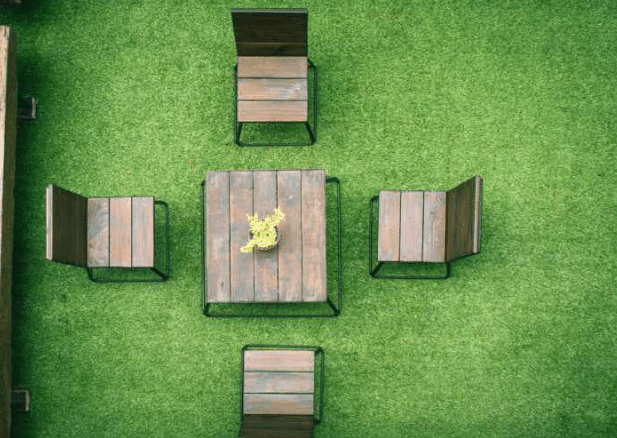How To Incorporate Artificial Grass To Improve Your Home’s Aesthetic Value In El Cajon?

- There are many different kinds of synthetic turf available, so it’s important to choose one that best fits your needs and preferences. Consider factors such as durability, color, texture, drainage capabilities and price when making your decision.
- You don’t have to cover an entire lawn with artificial grass – you can use it to create pathways or accent areas instead. Paths made from artificial turf add a nice design element and can really enhance your outdoor space.
- Artificial grass looks best when there are some plants incorporated into the design. Try adding some shrubs, flowers, or even trees to your yard in order to bring out the beauty of the synthetic turf even more.
- You can also add interest to your yard by creating interesting borders with bricks, gravel, rocks, or pavers around the edges of the artificial turf area. This will help define the space and tie everything together nicely.
- To create a truly magical outdoor space, add lighting to your yard. Low-voltage landscape lights or solar-powered lights can be placed around the perimeter of the artificial grass area for a stunning night time effect.
- To further improve your home’s aesthetic value, incorporate other elements such as an outdoor fire pit or seating area into your design. This will create more visual interest and give you areas to relax in and enjoy your newly transformed lawn.
- Maintaining synthetic turf is fairly easy, but it does require some regular cleaning in order to keep its vibrancy and beauty intact.
FAQ’s
How Eco-Friendly Is Artificial Grass?
Artificial grass is a very eco-friendly choice because it doesn’t require water or fertilizer and also eliminates the need for mowing or trimming. It also helps reduce runoff and erosion of soils, which can be beneficial in areas prone to flash flooding or landslides.
Is Synthetic Grass A Perfect Option For Home?
Synthetic grass, also known as artificial turf, can be a viable option for homeowners for a variety of reasons, but whether it is the “perfect” choice depends largely on one’s specific needs, lifestyle, and environmental considerations. For those seeking a low-maintenance lawn, synthetic grass excels. It doesn’t require watering, mowing, or fertilization, which can save significant time and resources, especially in areas with water restrictions or harsh climates. It’s also highly durable and can withstand heavy foot traffic, making it great for homes with children or pets. However, artificial turf isn’t without its drawbacks. Its initial installation costs can be higher than natural grass. It doesn’t contribute to local biodiversity as it doesn’t provide habitat or food for local fauna like birds and insects, and it doesn’t have the same capacity to absorb carbon dioxide or produce oxygen as living grass does. Furthermore, the production and disposal of synthetic grass have environmental implications. Many types of artificial turf are made from petroleum-based products, and while recycling options are increasing, they’re not universally available. Consequently, old turf can end up in landfills. In terms of aesthetics and feel, while high-quality artificial grass can closely mimic the look and feel of natural grass, it’s still not quite the same. Some people simply prefer the naturalness and smell of real grass and find it more appealing and refreshing.
How Long Will An Artificial Grass Lawn Last?
The lifespan of an artificial grass lawn depends on several factors such as the quality of product used, how well it’s cared for, and the climate where it’s located. Generally speaking, synthetic turf can last anywhere from 10-15 years with proper maintenance.
What Are The Perfect Ways To Use Artificial Grass For Kitchen?
Using artificial grass in the kitchen might seem unusual, but it can bring a unique, vibrant, and fresh aesthetic to your home. Artificial grass can be cut to size and used as an indoor floor mat. It’s easy to clean, durable, and provides a refreshing contrast to typical kitchen surfaces. It also gives a cushioning effect that can be more comfortable underfoot than hard floors. Artificial grass can be used to create a green wall feature in your kitchen. It not only adds a vibrant splash of color but can also create a calming, natural ambiance. Depending on the wall area covered, it could be a subtle accent or a dramatic focal point. For a creative twist, use artificial grass as a table runner or placemats. It’s an unexpected way to bring an outdoor feel to your dining area. Plus, they’re easy to clean and can withstand heat better than traditional fabric options. Artificial grass can be used as a base for an indoor herb garden in your kitchen. Place your pots on a patch of artificial grass to create a mini garden experience. It adds greenery and helps to catch any water or soil spillage. Installing artificial grass under your kitchen bar area or island can create a unique visual element and bring in an outdoor vibe.
What Are The Qualities Of Artificial Grass?
Synthetic turf is durable, low-maintenance, and environmentally friendly. It doesn’t require watering or fertilizer and it won’t grow weeds or attract pests. It also provides a high aesthetic value by creating a lush and vibrant outdoor space that can be enjoyed year-round.
Conclusion
It is easy to see why artificial grass has become such a popular choice for homeowners looking to enhance their outdoor spaces. With its long lasting durability and low maintenance requirements, synthetic turf is an excellent option that can improve your home’s aesthetic value while also being good for the environment. For more information, contact Artificial Grass El Cajon at (619) 202-8848.

